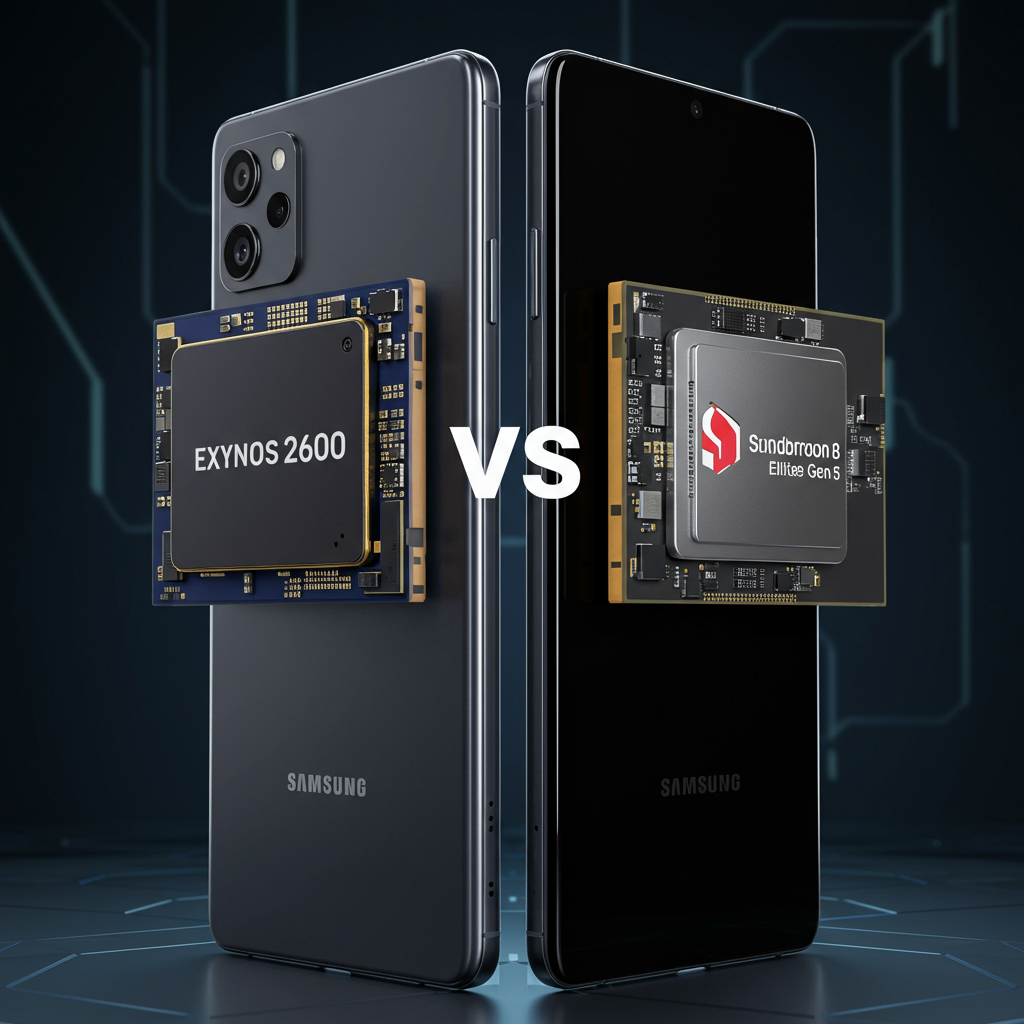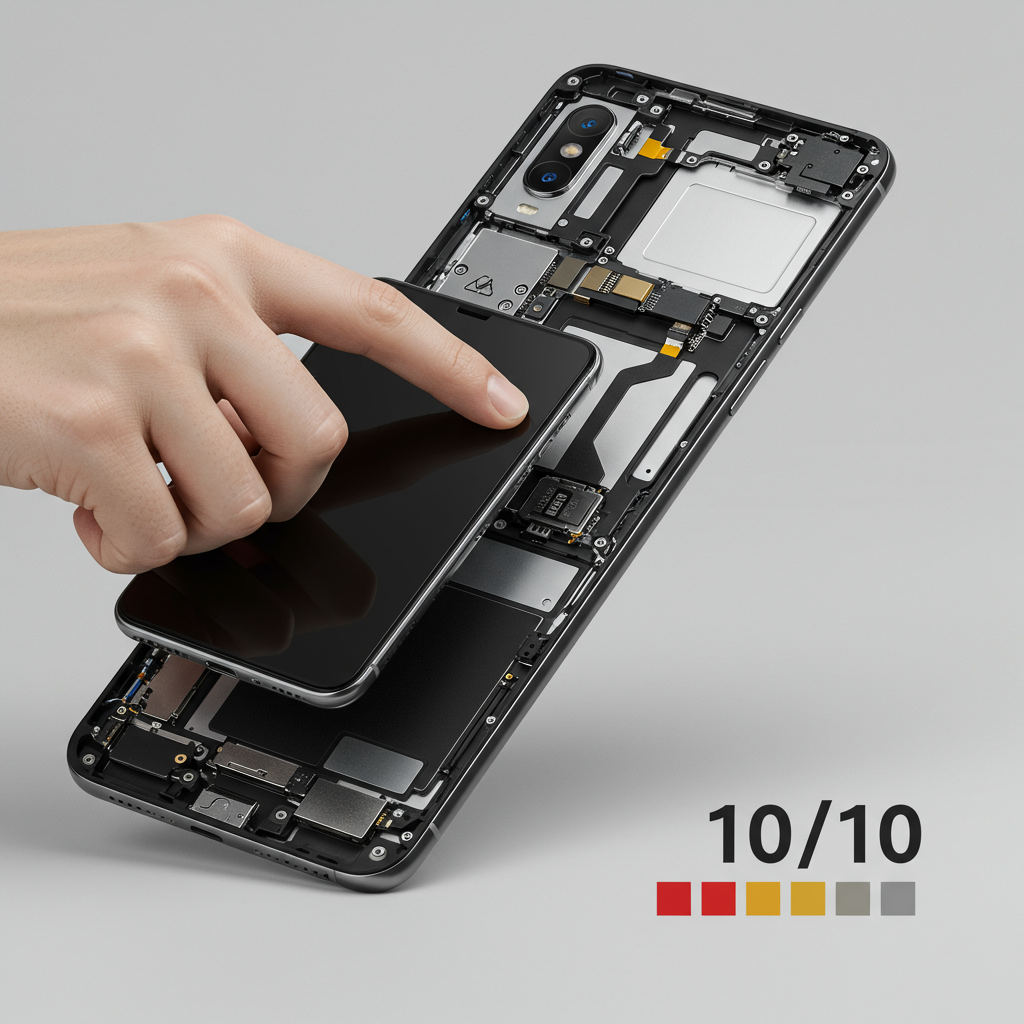The Samsung Galaxy S26 Ultra generates immense anticipation, consistently ranking as one of the most awaited smartphones each year. As early 2026 approaches, a crucial question hangs over its release: which processor will power this flagship device? Recent reports, often contradictory, have created a whirlwind of speculation, especially regarding Samsung’s in-house Exynos 2600 chipset and the formidable Snapdragon 8 Elite Gen 5.
This article dives deep into the evolving rumors surrounding the Galaxy S26 Ultra’s heart, exploring performance claims, user expectations, and the potential implications for Samsung’s most premium offering. We’ll also cover other significant enhancements expected across its camera, display, design, and battery, painting a comprehensive picture of what the next Ultra might bring to market.
The Evolving Chipset Saga: Exynos 2600 vs. Snapdragon 8 Elite Gen 5
Initial whispers hinted at a dramatic shift: Samsung reportedly intended to equip its entire Galaxy S26 lineup, including the top-tier Galaxy S26 Ultra, with its proprietary Exynos 2600 chip. This strategy would mark a significant departure from recent trends, where Ultra models typically favored Qualcomm’s Snapdragon processors, especially in key markets. Many fans, remembering past performance disparities, expressed skepticism and hoped the Galaxy S26 Ultra would retain its Snapdragon variant.
However, newer intelligence suggests a more nuanced reality, indicating a potential return to Samsung’s historical “geographical lottery.” Recent reports now claim that the Galaxy S26 Ultra will indeed offer a Snapdragon 8 Elite Gen 5 variant, but its availability will be limited to a handful of markets, specifically the United States, Japan, and China. Conversely, regions like South Korea, Europe, and many “other regions across the globe” are expected to receive the Exynos 2600-equipped version of the Galaxy S26 Ultra. For the non-Ultra models, like the Galaxy S26 and S26 Pro, the Exynos 2600 is still anticipated to be the universal processor across all markets. This mixed approach aims to satisfy both internal development goals and competitive market demands, setting the stage for intense performance comparisons.
Samsung’s Exynos 2600: A Performance Powerhouse?
Samsung faces an uphill battle with the Exynos 2600 due to lingering negative perceptions from previous Exynos iterations. Despite this, the company appears confident in its new solution. Internal tests for the Exynos 2600 reveal impressive projected gains. Samsung claims its new chip boasts an astounding six times the AI processing power compared to Apple’s latest chipset. Beyond AI, the Exynos 2600 is also touted to deliver a 15% increase in CPU performance and a substantial 75% boost in GPU performance overall.
Furthermore, direct comparisons with the anticipated Snapdragon 8 Elite Gen 5 paint an optimistic picture for the Exynos 2600. It’s reportedly capable of 30% higher AI processing and up to 29% greater GPU performance than its Qualcomm counterpart. These gains are attributed, in part, to Samsung’s design choice of opting for a standalone modem chip. This strategic decision frees up valuable space, allowing for an increased CPU and GPU area within the chipset, thereby enhancing overall processing capabilities. While these claims are yet to be validated by independent benchmarks, they underscore Samsung’s commitment to making the Exynos 2600 a truly competitive powerhouse.
Beyond the Chip: Anticipated Galaxy S26 Ultra Features
Beyond the core processor, the Galaxy S26 Ultra is expected to deliver significant advancements across various fronts, solidifying its position as a premium flagship device.
Display & Design Innovations
The Galaxy S26 Ultra is projected to retain its expansive 6.9-inch display, a size popular with power users. This screen, however, is set for a substantial upgrade, potentially reaching a staggering 3,000 nits of peak brightness – a notable jump from the S25 Ultra’s 2,600 nits. Key display enhancements include a new CoE OLED panel with an embedded color filter layer, promising sharper visuals and improved battery efficiency. Whispers also suggest “Flex Magic Pixel OLED panels,” which could enable a native “privacy screen” effect without compromising user brightness, a groundbreaking feature. Samsung’s advanced M14 material is also expected, leading to a thinner, more energy-efficient display with better color separation and enhanced anti-reflection properties beyond existing Gorilla Armor.
From a design perspective, the S26 Ultra is likely to build upon the refined aesthetic of the S25 Ultra. Minor adjustments might make it slightly slimmer, though this could necessitate a more prominent “camera island” to accommodate advanced sensors. User feedback, however, suggests a desire for a return to the curvaceous, more comfortable design of earlier Ultra models, moving away from the flatter, more boxy aesthetic. Some also hope for a reinstatement of distinctive camera bump designs, like the “Contour Cut” of the S21 and S22 series, to give the device more personality. The S Pen silo is expected to remain, a testament to its enduring appeal despite challenges with new technologies like Qi2 wireless charging.
Revolutionary Camera System Upgrades
Samsung aims to keep the Galaxy S26 Ultra at the forefront of mobile photography. The main camera is anticipated to retain its impressive 200MP resolution but will likely feature an entirely new, larger 1/1.1-inch Sony sensor. This larger sensor promises to capture more light, faster, leading to clearer images and a more natural bokeh effect. Rumors also circulate about the return of a variable aperture, potentially toggling between F1.5 and F2.4, or even a fixed F1.4 aperture for superior light gathering.
While the telephoto camera might retain its 50MP sensor, many users wish for the reinstatement of a dedicated 10x optical zoom lens, previously a hallmark of the Ultra series. This would cement its reputation as the “zoom king.” Beyond stills, Samsung is reportedly redoubling efforts to improve video capture, an area where it seeks to challenge competitors with enhancements in cinematic effects, detail, stabilization, and audio quality. Further refinements in post-processing are also expected, aiming for a more realistic image output.
Power & Longevity: Battery, Charging, and Software
Battery capacity for the Galaxy S26 Ultra is expected to remain at a solid 5,000 mAh. However, overall battery life improvements will hinge on the efficiency of the new chipsets and software optimizations. A significant upgrade is anticipated for wired charging speeds, potentially increasing from 45W to a more competitive 60W. Many users, however, advocate for even faster charging solutions and perhaps innovations like silicon-carbon batteries for higher capacities.
On the software front, the Galaxy S26 Ultra will launch with One UI 8, based on Android 16. It’s poised to integrate even more advanced AI capabilities, likely leveraging Google’s Gemini. Samsung’s commendable commitment to seven years of software support means the S26 Ultra would receive updates well into 2033. Regarding the S Pen, there’s a strong call to restore its full Bluetooth LE functionality, including Air Actions and remote camera shutter capabilities, to truly justify its premium inclusion. Furthermore, for wireless charging, users expect native Qi2 support with integrated magnets, not relying on specific cases, even if it presents engineering challenges with the S Pen. The upcoming Qualcomm X85 5G modem will also bring faster data transfers and improved battery efficiency.
Pricing and Release Date Predictions
Traditionally, Samsung’s S-series flagships are unveiled in January and shipped by February. However, there’s speculation about an even earlier launch for the Galaxy S26 Ultra, possibly pushing pre-orders into December 2025 to capture holiday sales and compete more directly with Apple’s fall releases. Current predictions, though, generally point to an announcement in late January or early February 2026, with availability shortly thereafter.
In terms of pricing, analysts do not anticipate an increase for the Galaxy S26 Ultra. The starting price for the 256GB model is expected to remain around $1299.99, consistent with its predecessor. Samsung typically offers enticing launch deals, including enhanced trade-in values, free storage upgrades (e.g., 512GB for the price of 256GB), and exclusive online colors. Carrier deals from major providers are also expected to provide significant discounts, further sweetening the pot for early adopters.
Frequently Asked Questions
Will all Samsung Galaxy S26 Ultra models feature the Exynos 2600 chipset?
No, according to the latest reports. While non-Ultra S26 models might be exclusively Exynos 2600 globally, the Galaxy S26 Ultra is expected to revert to a “geographical lottery.” Markets like the US, Japan, and China are likely to receive a Snapdragon 8 Elite Gen 5 variant, while South Korea, Europe, and many other regions will get the Exynos 2600-equipped Galaxy S26 Ultra. This strategy aims to balance Samsung’s in-house chip development with market preferences.
When is the Samsung Galaxy S26 Ultra expected to be released, and should I wait for it?
The Samsung Galaxy S26 Ultra is primarily anticipated for release in early 2026, with an announcement likely in late January or early February. Some rumors suggest a possible earlier pre-order period in December 2025. Whether you should wait depends on your current device; if your existing phone is still performing well, waiting could provide access to significant camera, display, and potentially chipset upgrades. However, if you need an immediate upgrade, current flagships are already highly capable.
What major camera and display upgrades are rumored for the Galaxy S26 Ultra?
The Galaxy S26 Ultra is rumored to feature a new, larger 1/1.1-inch Sony 200MP main sensor for enhanced light capture and bokeh, along with a potential return of a variable aperture (F1.5/F2.4 or F1.4). Video capture improvements are also a focus. For its display, expect a brighter 6.9-inch screen with 3,000 nits peak brightness, a new CoE OLED panel, and potentially “Flex Magic Pixel OLED” for a native privacy screen effect, all built on advanced M14 material for efficiency and clarity.
Conclusion
The Samsung Galaxy S26 Ultra is shaping up to be an incredibly compelling device, even amidst the complexities of its chipset strategy. While the return of a geographical split for the Exynos 2600 and Snapdragon 8 Elite Gen 5 in the Ultra model may initially cause debate, Samsung’s ambitious performance claims for its in-house chip suggest a confidence in its capabilities. Beyond the processor, the anticipated upgrades to its display, camera system, design, battery, and software promise to deliver a truly premium smartphone experience. As the official launch approaches in early 2026, all eyes will be on Samsung to see how these innovations translate into real-world performance and user value. Stay tuned for official announcements and further details that will shape the next generation of Galaxy flagship.




